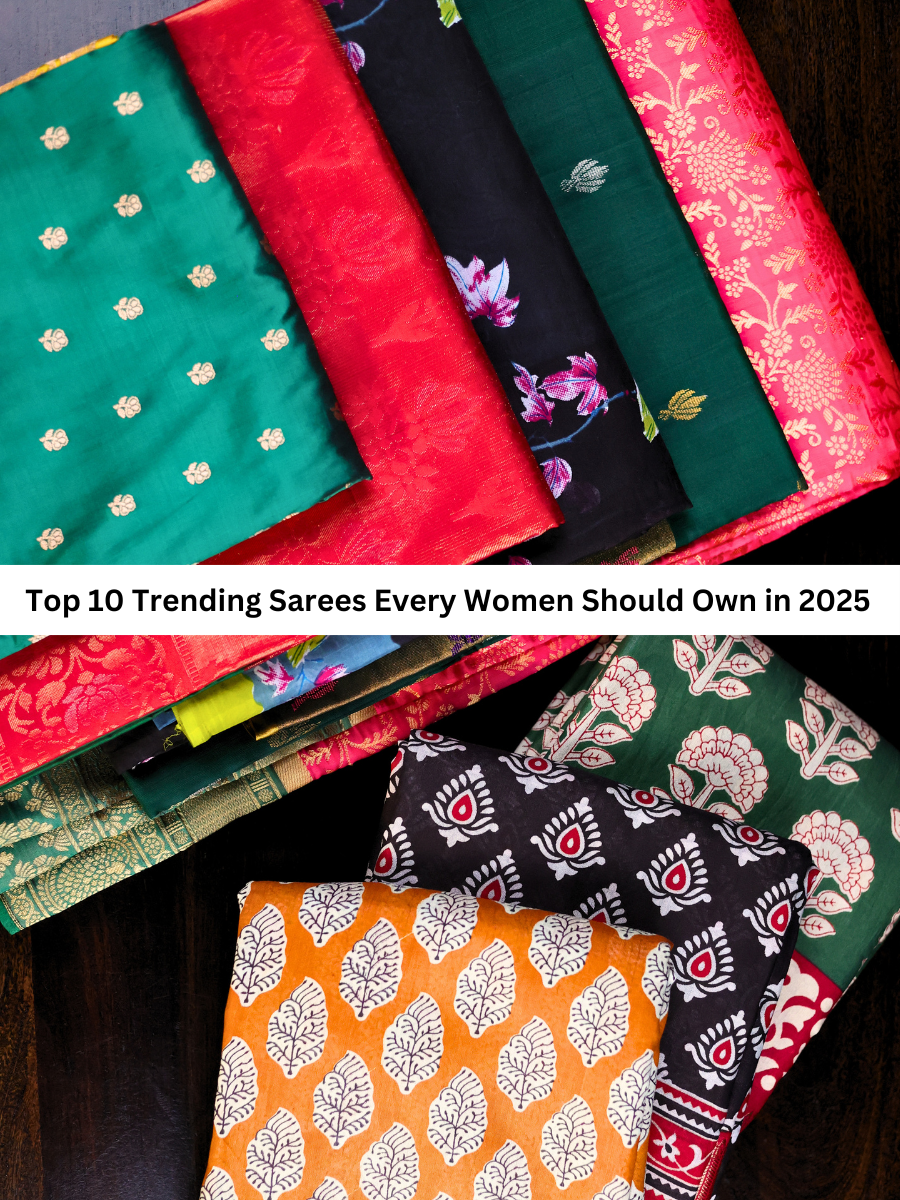The Timeless Elegance of the Traditional Saree: A Cultural Treasure
The traditional saree is more than just a garment—it's a representation of India's cultural heritage, craftsmanship, and timeless beauty. Worn by women for centuries, the saree has evolved in both design and style while preserving its deep connection to India's rich history. At Gayathri Sarees, we celebrate this iconic attire that continues to inspire and captivate.

What Makes the Traditional Saree So Special?
The traditional saree stands out for its simplicity and versatility. This single piece of cloth, typically ranging from 5 to 9 yards, is draped around the body in various artistic styles, flattering all body types. Whether made of luxurious silk, comfortable cotton, or lightweight georgette, the saree offers an unmatched combination of style, comfort, and cultural significance.
A Variety of Fabrics, A Range of Styles
The traditional saree comes in a variety of fabrics, each with its own charm and history. From silk sarees, which are perfect for weddings and celebrations, to the more casual cotton sarees, which are ideal for daily wear, there is a saree for every occasion. Other popular fabrics include chiffon, crepe, and georgette, each offering a unique texture and feel.
What makes these fabrics even more special is the artistry involved in weaving them. Techniques like Kanjivaram, Banarasi, Patola, and Baluchari showcase centuries-old craftsmanship. The intricate designs, patterns, and borders tell a story of the region’s culture, making each saree a timeless piece of art.
The Cultural and Religious Significance of the Traditional Saree
The traditional saree plays a vital role in India's cultural and religious practices. It’s a symbol of respect, tradition, and femininity, worn during important occasions like weddings, festivals, and religious ceremonies. For example, during the Hindu festivals of Diwali, Durga Puja, or Onam, women often wear their finest sarees, honoring the cultural significance of these events.
In weddings, the saree is not just attire but a symbol of the bride's new journey. Whether it’s a rich Kanjivaram saree or a Banarasi silk saree, the traditional saree carries deep meanings of prosperity, happiness, and new beginnings.
A Global Fashion Statement
Though deeply rooted in Indian tradition, the traditional saree has gained popularity across the globe. With its elegance, grace, and versatility, the saree has been embraced by women worldwide, including international fashion circles. Today, many women wear sarees to celebrate cultural events or even as part of their fashion statements, proving that the saree is not just a local tradition but a global symbol of beauty and grace.
How to Style the Traditional Saree
The traditional saree is incredibly versatile and can be styled for any occasion, whether it’s a grand wedding or a casual outing.
For Weddings and Festivals
When attending weddings or festive occasions, choose a saree made from luxurious fabrics like silk, brocade, or zari. These sarees often feature intricate patterns, heavy embroidery, or metallic thread work, making them ideal for special events. Complement the saree with traditional jewelry like gold necklaces, earrings, and bangles to complete the look.
For Everyday Wear
For daily wear or office settings, cotton sarees or lighter fabrics like linen offer a comfortable yet stylish look. Simple prints, such as floral motifs, geometric patterns, or stripes, provide a modern touch while maintaining the saree’s traditional essence. Pair your saree with minimal jewelry and a simple hairstyle to keep the look fresh and chic.
The Versatility of the Traditional Saree: Draping Styles
One of the most unique aspects of the traditional saree is the variety of draping styles. The most common drape is the Nivi drape, which is popular across India, but different regions have their own distinct styles. For example:
- The Maharashtrian drape is characterized by a simpler, pleated style with the pallu draped over the shoulder.
- The Bengali drape often involves wearing the saree with the pallu at the front and is associated with traditional Bengali culture.
- The Gujarati drape is known for its unique style, where the pallu is pinned on the shoulder and pleats are tucked in at the back.
Each draping style reflects the culture and traditions of the region, adding another layer of significance to the saree.
Conclusion: Celebrating the Legacy of the Traditional Saree
The traditional saree is more than just a piece of clothing; it is a reflection of India’s rich cultural heritage, a celebration of artistry, and a symbol of femininity and grace. Whether worn at weddings, festivals, or as a daily garment, the saree continues to be a timeless symbol of elegance.
At Gayathri Sarees, we honor the enduring legacy of the saree by offering a curated selection of exquisite sarees that reflect the finest craftsmanship and timeless tradition. As you explore the beauty of the traditional saree, remember that each one tells a unique story of cultural pride, history, and artistry.
Whether you're purchasing a saree for a special occasion or adding to your collection, embrace the elegance and tradition that comes with this timeless garment.


